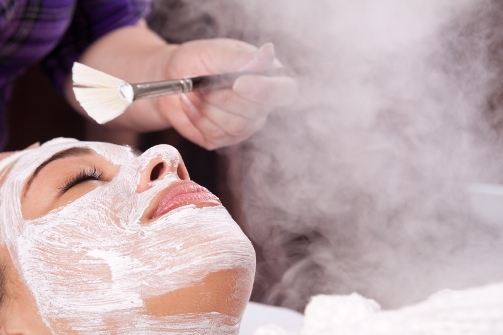Emma Hobson, Education Manager Asia Pacific, The International Dermal Institute, says if clients want to look younger, you’ll need to work on achieving a luminous, even skin tone.
There seems to be no sign of easing when it comes to the consumer’s insatiable hunger for seeking out every anti-wrinkle product, new wonder ingredient and the latest innovative treatment in the pursuit of youthful skin.
However many clients miss one very vital element — addressing their pigmentation. The first sign of premature ageing is not the appearance of lines and wrinkles but in fact blotchy, uneven skin discolouration.
So then why aren’t pigmentation products the top sellers (as they are in Asia)?
Perhaps because we have a long-standing (but debatable) perception that a tan makes us look healthy and more attractive; a lack of education as our focus has been placed predominantly on treating wrinkles; and, sometimes it’s too much effort, and sadly there’s no quick fix for treating pigmentation.
Treating pigmentation needs to be a multi-pronged approach which addresses the triggers, supresses the pigment and protects against any future damage. The level of success is also partially dependent on the cause and one’s hereditary background.
Main Triggers that Stimulate Pigmentation
- UV exposure: As well as causing skin cancer it also accelerates ageing, including hyper (excess) and hypo (lack) pigmentation.
- Fluctuating hormones from stress, pregnancy and menopause that stimulate melanin
- Inflammation associated pigmentation, such as acne scarring
- Pollution
- Medications and various medical treatments
- Artificial fragrance (photosensitivity)
Effective Treatment Options
Recommend clients use home care treatment products containing active ingredients that act as pigment (melanin) suppressors.
Various ingredients affect the different stages of the metabolic chemical pathway (melanogenesis) involved in pigment production and work as a combined ‘task force’. The highest concentrations of these active ingredients are normally found in serum style products.
You can’t discuss treating pigmentation without mentioning the importance of exfoliation.
Exfoliation speeds up the skin’s cell turnover rate and in addition it improves the effective penetration of pigment-lightening actives into the skin. I’d recommend clients exfoliate two to three times per week with a high powered Lactic Acid exfoliant. Lactic acid has an added benefit of lightening the skin whilst you exfoliate.
 Ensure all your clients’ products are fragrance-free and that they avoid applying any perfume directly to the skin, as artificial fragrance can be photo sensitive and cause skin discolouration.
Ensure all your clients’ products are fragrance-free and that they avoid applying any perfume directly to the skin, as artificial fragrance can be photo sensitive and cause skin discolouration.
Lastly I can’t emphasise enough how important the diligent use of a SPF 30-50+ sunscreen is. It will ultimately determine the results clients will achieve and reduce the chance of further pigmentation issues.
For optimal results I’d highly recommend combining the above approach with a course of professional skin treatments. There are several options which include chemical peels, IPL, LED and various other light based therapies including laser resurfacing.
With the cooler months and a lower UV index fast approaching, it’s a great time to consider starting a treatment plan for your client.
Remembering that effective treatment takes time, patience and combination the diligent use of homecare products, receiving a course of professional treatments and avoiding the known triggers, but the investment in each is well worth it.
Emma’s Top 6 Active Ingredients
- Retinol; which ‘ramps up’ the production of more healthy, younger cells, in turn this speeds up the entire process of skin renewal. Retinol also helps reduce the breakdown of healthy collagen by UV exposure whilst in tandem, stimulates the production of new collagen. Retinol inhibits the production of the skin pigment melanin, meaning it’s very effective in improving skin discolouration and lightening brown spots.
- Oligopeptide 34; peptides have been a game changer for effectively treating pigmentation. This fantastic peptide is used to decrease the quantity and transfer of pigment to cells. Excitingly it appears to lighten sun induced pigmentation after just two weeks of twice daily application.
- Palmaria Palmata; red algae which reduces the amount of melanin made and inhibits sun induced pigmentation.
- Glucosamine; reduces the amount of pigment in skin cells. It’s also effective on decreasing in the size of age spots.

Emma Hobson, IDI - Niacinamide (Vitamin B3); inhibits by as much as 68 per cent the transfer of pigment to surrounding skin cells. Great for diminishing pigment spots.
- Vitamin C (Magnesium Ascorbyl Phosphate, Ascorbyl Glucoside); brightens the skin without impairing skin health.




